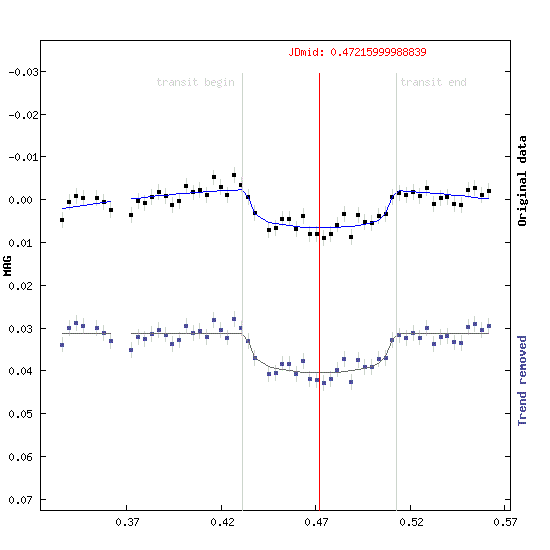GPX-1b: discovery of a brown-dwarf! On 2017 and 2018, our friend Paul Benni, observed a large fields in northen sky searching for exoplanet during his campain called GPX (Galactic Plane eXoplanet search). We were happy to join in this project. And we were always active to follow-up his target.
One of this target was the called GPX-TF8A-1859. Me, Riccardo Papini, Alessandro Marchini and Massimo Banfi, with our telescopes (WBRO and UniSi) worked on this follow-up with several observation with both telescopes.
Of course, our contribution it was about photometrical observations on target with our smaller telescopes (30cm for Siena and 23.5 for WBRO). But observations were always good, even only to refine the ephemeris. We always observed this target with a 300 sec of exposition, full calibrated frames.
We used the ETD algorythm to obtain the normalized lightcurve.

In THIS paper we announce the definitive discovery of a new exoplanet/brown-dwarf orbiting around the star 2MASS J02332859+5601325.
GPX-1b: discovery of a brown-dwarf it was real! Mass of GPX-1b it’s about 20 Jupiters and its orbital period around his star is 1.7446 days. The planet’s radius is about 1.5 Jupiter (so, high density) with a surface temperature over 2000°K around a fast-rotating F-star (aroung 1.5 Sun masses, and 1.5 Sun radii).
GPX-1 b is one of about two dozen transiting brown dwarfs known to date, with a mass close to the theoretical brown dwarf/gas giant planet mass transition boundary.
